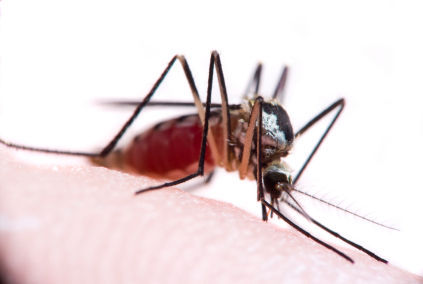Lots of Bugs. Types & Basic Info

What kinds of insects can be expected? Well, Biting Flies, Mosquitoes, No-see-ums, Deer/Horse Flies, Black Flies, and Sand Flies.
How do they find us?
Biting flies find us through the smell of our breath, and once closer, they will detect our body heat. Although warmth is one of the main triggers for a feasting session, the mosquito will not bite if the chemical qualities of the sweat and other skin glands are not appealing to them. This is why some people are more alluring to the biting fly world than others.
How do they bite?
A mosquito’s “stinger” is actually extremely complex. What appears to be one needle is actually the sheath for six probes that pierce, suck, hold, and transfer anti-coagulants. Unlike mosquitoes, other biting flies are actually quite primitive by comparison. Their mandibles simply slice away at the victim’s skin until blood is drawn.
 Bees and Wasps
Bees and Wasps
Wasp and bee stings are designed to be very painful. The sting itself is driven in by sharp, sheathing lancets. Venom is stored in a sac near the stinger and then injected through the outer skin via the sting shaft.
Bee Stings
Bee “stingers” are heavily barbed, and are left at the sting site along with the venom sac, which continues to pump and inject venom. Because of this, bee stingers should be removed as quickly as possible after an attack. The disemboweled bee soon dies, having willingly given its life to defend its colony.
Wasp Stings
Wasp stingers are only lightly barbed, just enough to help penetrate skin, and can be with drawn and used many times.
Frequency of Nest Encounters
Some treeplanters will work all season without encountering a bee or wasp nest. Less fortunate planters have found themselves working in areas where the average person on the crew stuck their shovel through 5 or more nests buried in the ground on a single day. Yikes!

